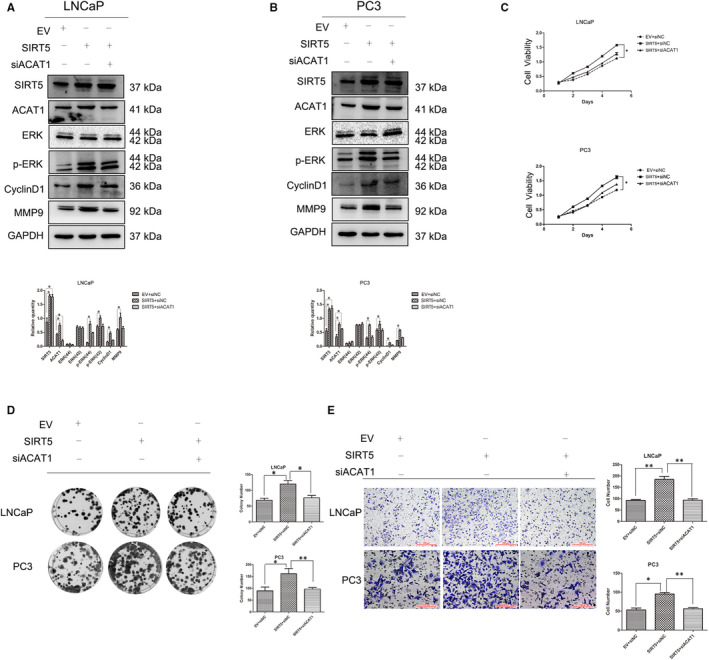FIGURE 5.

SIRT5 regulates the function of prostate cancer cells through ACAT1 Overexpression of SIRT5 and silencing of ACAT1 in (A) LNCaP cells and (B) PC‐3 cells were performed simultaneously. Changes in the expression of other proteins in these two cell lines are shown. *P < .05, **P < .01. (C) Changes of LNCaP (upper panel) and PC‐3 (lower panel) cell proliferation (MTS assay) after co‐transfection with the SIRT5 plasmid and ACAT1 siRNA. The results show that silencing ACAT1 prevents the SIRT5 tumour‐promotion effect. *P < .05, **P < .01. (D) The colony formation assay shows that the ability of SIRT5 to promote colony formation is weakened in both LNCaP and PC‐3 cells after co‐transfection of the SIRT5 plasmid and ACAT1 siRNA. The right panel shows the number of colonies generated by these two cell lines. *P < .05,**P < .01. (E) The Transwell migration assay shows that the ability of SIRT5 to promote cell migration is weakened after co‐transfection of the SIRT5 plasmid and ACAT1 siRNA in both LNCaP and PC‐3 cells. *P < .05,**P < .01
